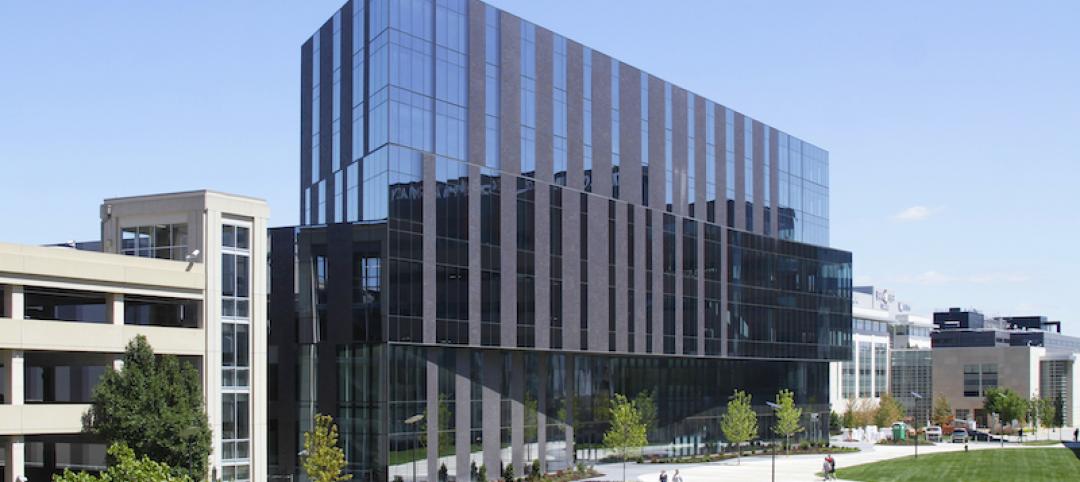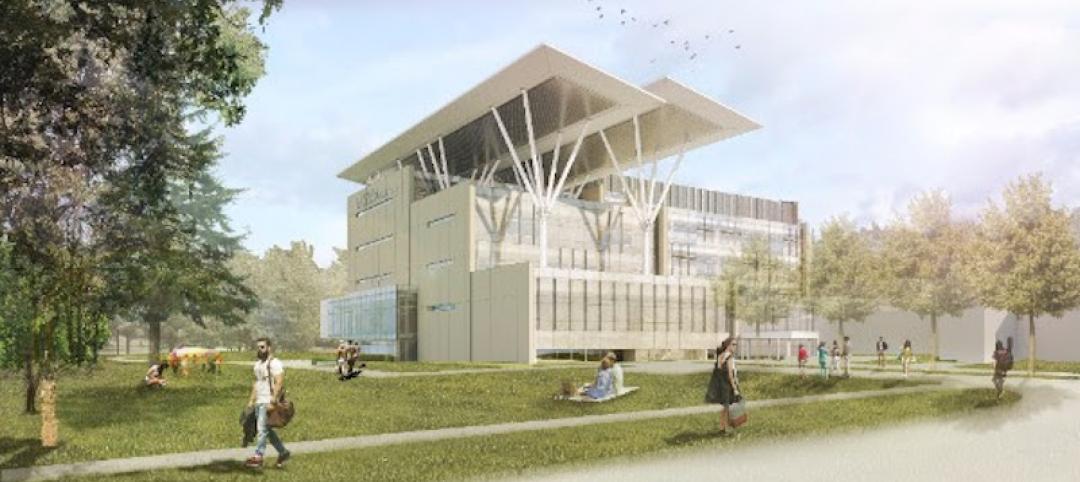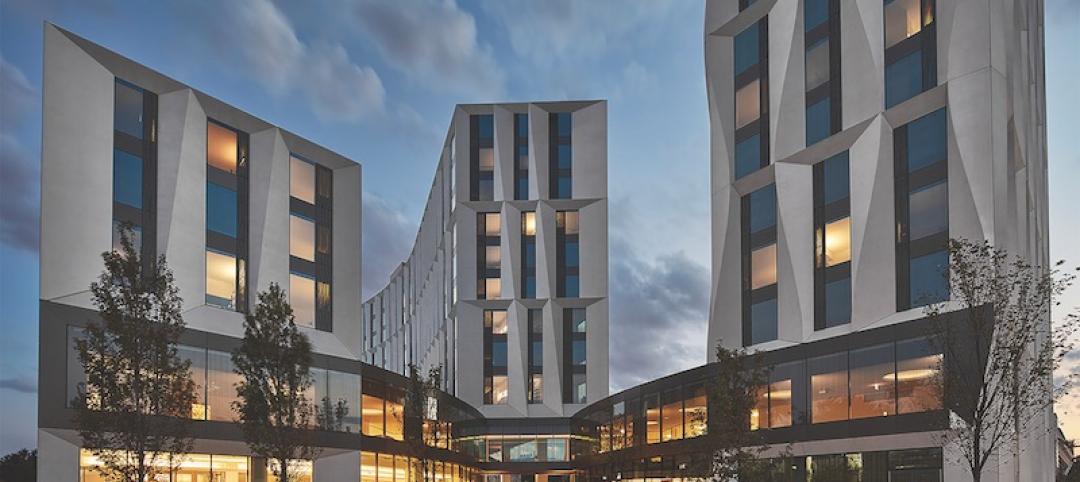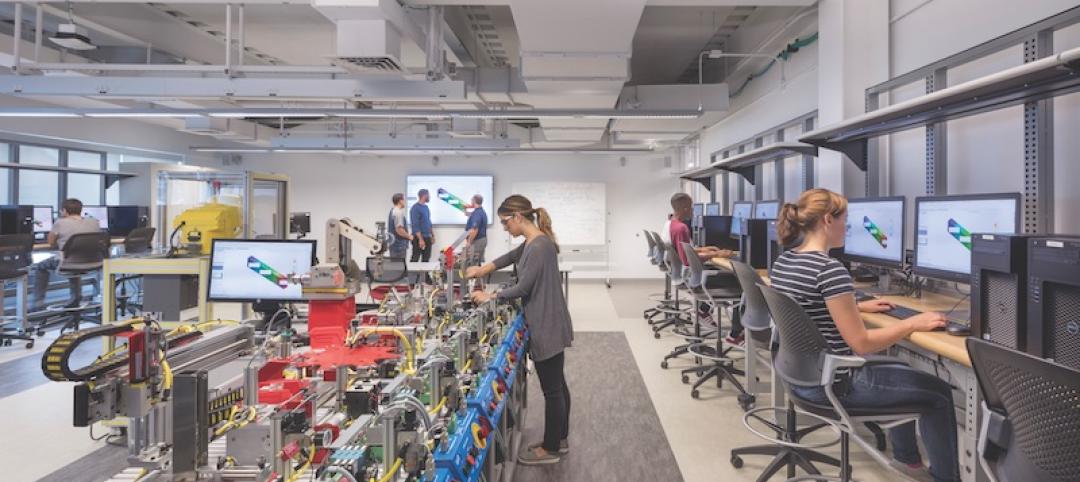Using prefabricated elements in the construction of the new Saint Joseph Hospital in Denver—scheduled to open Dec. 13—cut 72 workdays off the construction schedule and resulted in $4.3 million in savings, according to a study by University of Colorado Boulder engineers.
The study, by Matthew Morris and doctoral student Eric Antillon, both of the Department of Civil, Environmental and Architectural Engineering, is one of the first to try and quantify the full costs and benefits of using prefabricated elements in a large-scale construction project. The study was done in partnership with Mortenson construction, which built the new 831,000-square-foot Saint Joseph Hospital.
Developers often choose prefabrication to save time on a project. But because the process of building a unit — like a bathroom or an exterior wall panel — off site can be more expensive up front, due largely to the cost of transporting the finished products to the job site, the overall financial benefits haven’t been well understood.
“The direct cost of the actual units is more expensive — in this case 6 percent more expensive — but the cost savings come from indirect costs related to time savings,” said Morris, an instructor of construction engineering and management. “If you save three months on the schedule, that’s three months when you don’t have to pay for all the things you need to run a job site. This reduces your cost of big-ticket items such as supervision, equipment and your field office.”
For the Saint Joseph Hospital, Mortenson construction chose to prefabricate the exterior wall panels, the bathroom pods, the headwalls in patient rooms, and the utilities that run above hospital corridors by bundling them into prebuilt racks.
Prefabrication is an especially efficient technique in hospitals or any large building where the same type of unit has to be built over and over again, such as dorms or barracks, Morris said. At the Saint Joseph hospital, the need to have hospital rooms with standard equipment and private bathrooms allowed Mortenson to prefabricate 440 bathroom units and 376 patient room headwalls.
“This isn’t the solution for every project,” Morris said. “It takes a particular type of project with repetitive work and an owner and a design team that are willing to be completely onboard.”
Aside from allowing a project to be completed more quickly, prefabricating units offsite can also improve the safety of the job site by decreasing the number of different tradespeople who need to work in the building at any one time, reducing elevated work and providing a controlled environment.
For example, when utilities are traditionally installed in hospital corridors, a number of different subcontractors have to install cables, air ducts, piping and drywall overhead. Aside from the difficulty of working above your head, this causes congestion in heavily used hallways that can lead to accidents. In all, Morris and Antillon calculated that using prefabricated utility racks in the corridors along with other prefabricated units avoided seven safety incidents on the job site.
Even with the impressive cost benefits calculated in the study, Morris said it may be possible for builders like Mortenson to save even more time in the future by perfecting the sequence of work. In the case of the Saint Joseph Hospital, some prefabricated elements moved the project forward so quickly, that the workers responsible for the next phase of the project weren’t always ready to immediately get started.
It may also make sense in the future to only partially prefabricate some units before installation, which could help the workflow, Morris said.
“Fine-tuning is the next step,” he said. “Now we know that prefabrication saves time and money and increases quality and safety. The next steps include developing best practices, training project teams and continuing to drive out inefficiencies.”
Related Stories
University Buildings | Aug 28, 2017
Just what the doctor ordered: St. Louis College of Pharmacy receives new student center
The $50 million building adds over 193,000 sf of space to the campus.
University Buildings | Aug 8, 2017
Student center(ed): Is the student union the key to retention?
Studies indicate that the longer a student remains on campus—and in an academic mindset—the greater their chance for academic growth and success.
Healthcare Facilities | Aug 8, 2017
Kansas’ only medical school receives new 171,000-sf building
The building was designed to enhance the medical campus’ existing facilities, curriculum, and classrooms.
Laboratories | Aug 3, 2017
Today’s university lab building by the numbers
A three-month study of science facilities conducted by Shepley Bulfinch reveals key findings related to space allocation, size, and cost.
Higher Education | Jul 24, 2017
The renovation of the business school at St. John’s University looks to keep up with the Joneses
A nearly 40-year-old space is opened up and modernized.
University Buildings | Jun 29, 2017
Duke University’s new alumni and visitors center is a ‘modern adaptation of the campus’ architectural style’
The project will total about 47,000 sf of new construction and renovations.
Sustainability | Jun 28, 2017
Mohawk College will have one of the region’s first net-zero energy institutional buildings
The project’s net-zero goals led to the development of a new curtain wall system.
University Buildings | Jun 21, 2017
Student residence hall in Lisbon takes biophilic design to the next level
The luxury student accommodations will be Collegiate’s first outside of the U.K.
Building Team Awards | Jun 7, 2017
Blurring the lines: University of Chicago North Residential Commons
Gold Award: The University of Chicago’s new Residential Commons is part campus, part community.
Higher Education | Jun 7, 2017
Building for the future: Five trends in higher education projects
Preparing students for life after graduation has become the primary motivator behind construction initiatives at U.S. colleges and universities.

















